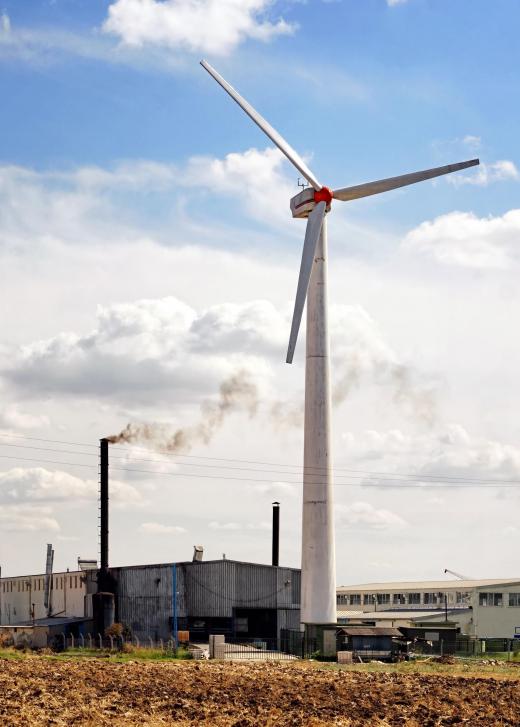What is the Difference Between Renewable and Non-Renewable Resources?
The concepts of renewable and non-renewable resources are often tossed around in the modern world. Some people say that society’s dependence on non-renewable resources is the reason for worker exploitation, many unfair trade practices, and even wars. Other people cite society’s use of non-renewable resources as one of the only ways many technological advances have been achieved so quickly. But to really understand these arguments, we must first understand the difference between renewable and non-renewable resources.
Renewable resources are any desirable items found in nature that can be naturally replenished over a useful period of time. That period of time is usually considered to be roughly the same rate that the items are used up. Useful items can be things such as trees for lumber, water for drinking, or fish for eating – so long as they are replenished at the same rate they are taken in.

But renewable resources don’t necessarily stay renewable. If the rate at which the renewable resource is harvested is far greater than the rate at which it is renewed, the once renewable resource begins to become depleted. A resource that becomes depleted may not ever be able to be replenished, and would then become a non-renewable resource. Fish are an example of this. In some areas, the numbers of fish have been so reduced through over-catching and pollution that they no longer live in countable numbers. In those specific areas, fish are no longer a renewable resource.

Many safeguards can be taken in order to help ensure a renewable resource does not becoming depleted. Sound management practices can be used so that not too much of a renewable resource is taken at the wrong time. The sustainable yield of a specific natural resource can be determined, and harvesting limits based on that number can be agreed upon. Programs that help restore renewable resources such as replanting harvested trees can be done. Modern technology can even be used to protect the natural resource from factors that might limit them, such as pollution or drought.

Non-renewable resources are desirable items found in nature that can not be replenished over a useful period of time. Coal and petroleum are arguable the two most important non-renewable resources. It can take millions of years and extremely rare conditions for these fossil fuels to be produced in nature, so they can not be considered renewable. Fossil fuels, however, are easily turned into power and heat with society’s current level of technology, so they are harvested well beyond their sustainable yield.
The biggest difference between renewable and non-renewable resources is that, eventually, non-renewable resources will run out. It may take decades, but, eventually, there will be no fossil fuels left on earth if they continue to be consumed at the current rate. Renewable resources might be used to replace them, but there are no current renewable resources at society’s current level of technology that provide the same level of usable power or heat as non-renewable resources.
Technology can further blur the line between renewable and non-renewable resources. It is possible for technology to make a previously non-renewable resource renewable; it can also either slow or increase the rate at which a resource is used. For instance, scientists are currently studying ways to use tanks of algae to produce petroleum, meaning that it might be possible in the far future for petroleum to be considered a renewable resource if enough technological advances occur. Fish are now raised in farms, with the hope being that they can be harvested at levels that satisfy demand but do not endanger natural species. Acts of conservation and technological advances allow society to use less of specific resources so that depletion is slowed.
AS FEATURED ON:
AS FEATURED ON:













Discussion Comments
do you think the cost of renewable energy is justified?
Can anyone tell me what is the best renewable energy technology out there? Is the best renewable energy source wind? What has the lowest environmental impact relative to output? What will be the best source of energy to replace the dwindling resources of petroleum, natural gas, and even coal? They all seem promising, but I don't know enough about any one renewable energy source to know.
@ Alchemy- While we do externalize the costs of the American dream I would like to shine an optimistic light on our current energy situation. Petro-politics aside, renewable energy sources are becoming much more profitable, and people are realizing that we cannot defer the true costs of energy forever. Every energy source will have its trade-offs, including renewables, but the idea is to minimize negative trade-offs that will affect the survivability of future generations.
Anyway, wind farms have become a good way to generate electricity and revenue. ROI's can be upwards of 10-12% over the lifetime of the investment, and the payoff is happening much sooner. It is actually more profitable to start a wind farm, solar plant, or other renewable electricity generation plant than it is to build a new nuclear plant. The biggest problem with rolling out renewable energy technologies is getting over peoples opposition to the site of the plants. No one wants a windmill in his or her back yard. I say it’s better than a smokestack.
I would argue the assertion that there are no renewable energy sources that currently match the output of traditional fossil fuel plants. We don't pay the true cost of fossil fuels directly, we pay those costs indirectly through defense budgets, environmental clean-up efforts by the government, etc. When did you ever hear about a solar, hydro, geothermal, or wind plant becoming a super fund site (corporate welfare)? When was there ever a war fought for a plot of land to be used for a solar thermal plant, or a battle for a windy ridge for power generation. To say that our current renewable energy technology is inadequate is naive.
Half of every tax dollar every American pays (except "American" energy companies) goes to DOD appropriations. Every base, military activity, etc. is there to protect American interests. These American interests are not people in the direct sense, they are the people that live on or around the natural resources our country needs to thrive. Our country only has about 5% of the world’s population, but we consume 25% of the world's resources.
Post your comments